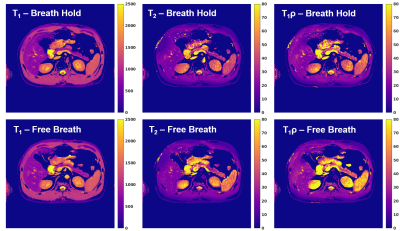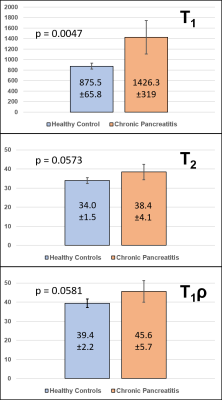Cory R. Wyatt1, Kaveh R. Sharzehi2, Erin R. Gilbert3, Brett R. Sheppard3, and Alexander R. Guimaraes1
1Diagnostic Radiology, Oregon Health and Science University, Portland, OR, United States, 2Gastroenterology and Hepatology, Oregon Health and Science University, Portland, OR, United States, 3Surgery, Oregon Health and Science University, Portland, OR, United States
1Diagnostic Radiology, Oregon Health and Science University, Portland, OR, United States, 2Gastroenterology and Hepatology, Oregon Health and Science University, Portland, OR, United States, 3Surgery, Oregon Health and Science University, Portland, OR, United States
Magnetic resonance fingerprinting was applied to acquire T1, T2, and T1ρ relaxation times in the pancreas of healthy volunteers and patients with chronic pancreatitis (CP). A significant increase in T1 was found with near significant increases in T2/T1ρ relaxation times in CP patients.


